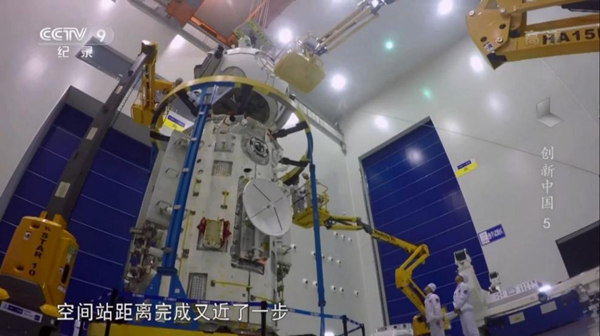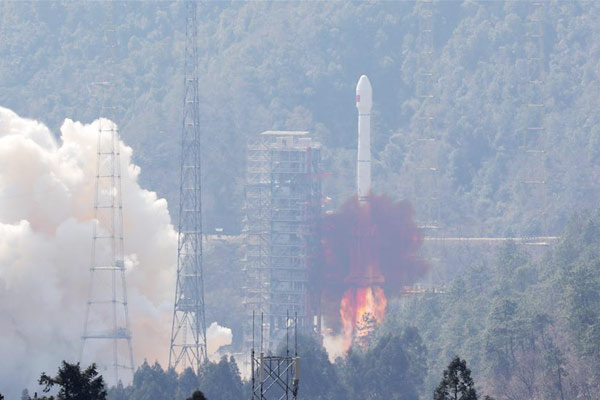China's space technology focal point of Zhuhai Airshow
Participants at Airshow China 2018 from Nov 6 to 11 are being invited to witness China's rise as a space power via state-of-the-art technology displays by the China Academy of Space Technology (CAST).
CAST, known as the China Aerospace & Technology Corp (CASC) Fifth Academy, is China's main arm for the R&D and manufacture of spacecraft.
The greatest achievements of the company will make a high-profile, public debut at the aerospace and military trade show in Zhuhai. In the spotlight will be manned space flight, deep-space exploration, satellite series, and a look at the application of these technologies to support civil missions.
CAST's remote sensing, Smart City, and Big Health industry successes will also be shown.
Tianhe-1 core module
Tianhe-1 (天和), the first of three 20-metric-ton modules that will constitute the Chinese Space Station (CSS), the other two being for experiments, will debut as a material object.

Tianhe core module [Photo courtesy CCTV]
Tianhe is responsible for controlling the flight attitude of the spacecraft, power performance, and environment monitoring in manned orbit, according to Shao Wenfeng of CAST. The main control cabin of the space station, it holds habitable living quarters and working space for astronauts.
The three-module structure can dock two manned spacecraft and a cargo spaceship.
Chang'e-4 rover and relay satellite Queqiao
A relay satellite was launched from the Xichang Satellite Launch Center in May. It will help Chang'e-4's first-ever attempt to make a soft landing on the far side of the noon with a lunar lander and rover in late 2018. It will be unveiled at the Zhuhai Airshow Center (model: 1:3).
The relay satellite is named Queqiao, meaning magpie bridge, from a mythic Chinese love story set against the backdrop of the moon. It is running in a halo orbit around the earth-moon Lagrange Point L2 to facilitate communications between terrestrial ground stations and the Chang'e lunar lander and rover spacecraft.

BDS satellites launched aboard Long March-3B carrier rocket on Feb 18 in Xichang, Sichuan Province [Photo courtesy Xinhua]
The far side of the moon is a hot spot for scientific and space exploration.
BeiDou Navigation Satellite System (BDS)
Another highlight is the Chinese satellite navigation system BDS, the fourth mature system of its kind in the world, following the Global Positioning System (GPS) from the United States, Glonass from Russia, and Galileo satellite navigation system from Europe.
China has been working on the build-up of the third-generation BeiDou system (BeiDou-3) since 2015.
Up to 17 navigation satellites are expected to be launched this year. It will bring the number of Beidou-3 satellites to 18, making a solid step toward global networking in 2020.
Related
Electronics giant to display defense and safety technology
China Electronics Corp (CEC), one of the largest producers of telecom equipment in China, will show 130 of its best products in defense electronics, information security, and public safety during Zhuhai's Airshow China 2018, to be held from Nov 6 to 11.
Space academy to debut satellite air-pollution monitor
Shanghai Academy of Spaceflight Technology (SAST) will unveil at the 12th China International Aviation & Aerospace Exhibition the first China-developed satellite for monitoring air pollution.







